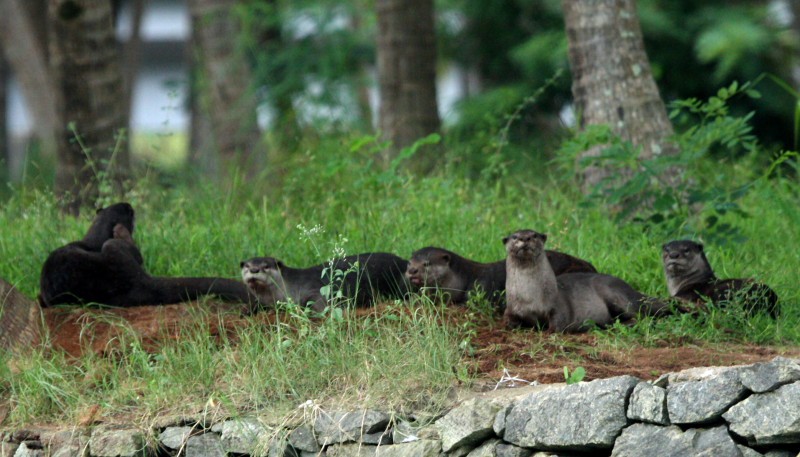Smooth-coated otter
A species of Lutrogale Scientific name : Lutrogale perspicillata Genus : Lutrogale
Smooth-coated otter, A species of Lutrogale
Scientific name: Lutrogale perspicillata
Genus: Lutrogale
Content
Description General Info
 Photo By Balakrishnan Valappil , used under CC-BY-SA-2.0 /Cropped and compressed from original
Photo By Balakrishnan Valappil , used under CC-BY-SA-2.0 /Cropped and compressed from original Description
The smooth-coated otter is a relatively large otter, from 7 to 11 kg (15 to 24 lb) in weight and 59 to 64 cm (23 to 25 in) in head-body length, with a tail 37 to 43 cm (15 to 17 in) long. It is distinguished from other otter species by its more rounded head and a hairless nose in the shape of a distorted diamond. Its tail is flattened, in contrast to the more rounded tails of other otters. Its legs are short and strong, with large webbed feet bearing strong claws. As its name suggests, it has unusually short and sleek fur; this is dark to reddish brown along the back, while the underside is light brown to almost grey in color. Females have two pairs of teats. 
General Info
Lifespan
8-12 years
Diet
Smooth-coated otter is primarily carnivorous, with a diet dominated by fish and crustaceans. Its predatory adaptiveness also extends to small mammals and insects, contributing to a versatile feeding behavior.
Appearance
Smooth-coated otter is a medium-sized mammal with a streamlined, semi-aquatic body. Its dense, smooth fur is dark brown on the upper body and lighter underneath. Often sporting whiskers and small, sharp claws, it possesses a flexible tail which aids in swimming. The males are slightly larger and heavier than females, further distinguished by their broader, squarely-shaped heads. This species doesn't exhibit marked differences in coloration or pattern based on age or subspecies.
Behavior
Smooth-coated otter is a nocturnal, semi-aquatic mammal, primarily engaged in foraging and grooming during dusk. Notably, it constructs denning burrows near water bodies. Being solitary outside breeding season, it exhibits territorial behaviors, marking its area with glandular secretions. Adapted to aquatic environments, smooth-coated otter exhibits remarkable swimming capabilities for foraging and escaping predators.
Population
Decreasing
Scientific Classification
Phylum
Chordates Class
Mammals Order
Carnivores Family
Mustelids Genus
Lutrogale Species
Smooth-coated otter